list of all Gretsch electric guitar with prices, specifications and features from difference online
stores at infinicisum.net
Gretsch G2622 Streamliner Center Block Double-Cut With V-Stoptail
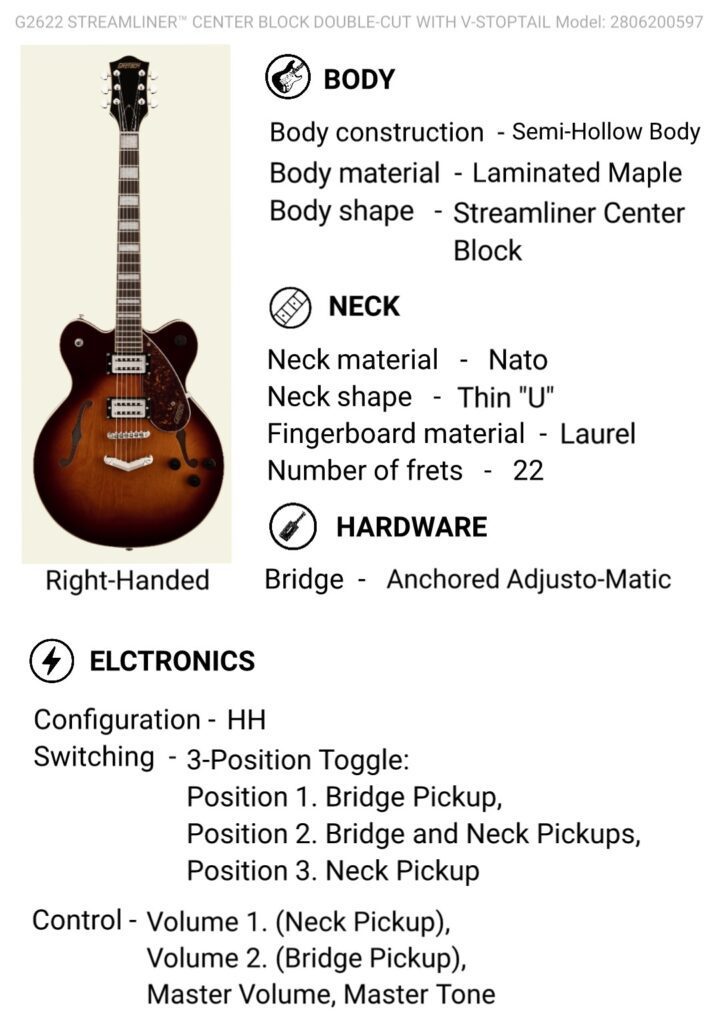
Read More
 Amazon.in
Amazon.in  ₹ 28,024
₹ 28,024  Go To Store
Go To Store
 Amazon.in
Amazon.in  ₹ 28,024
₹ 28,024  Go To Store
Go To Store
 Amazon.com
Amazon.com  $ 339
$ 339  Go To Store
Go To Store
 Amazon.com
Amazon.com  $ 339
$ 339  Go To Store
Go To Store
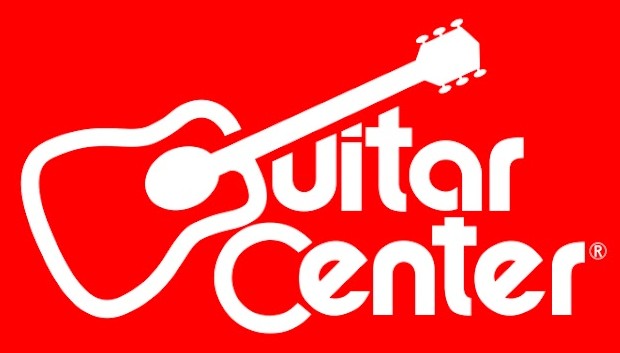 Guitar Center
Guitar Center  $ 329
$ 329  Go To Store
Go To Store
Gretsch G5260 Electromatic Jet Baritone With V-Stoptail
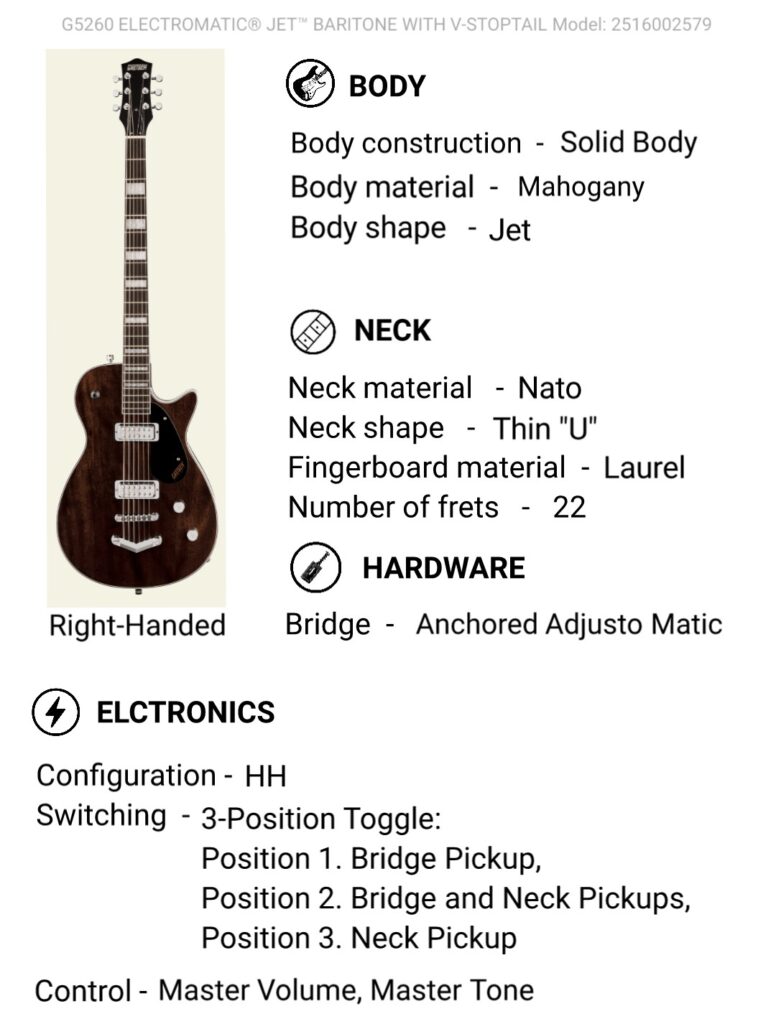
Read More
 Amazon.in
Amazon.in  ₹ 49,519
₹ 49,519  Go To Store
Go To Store
 Amazon.in
Amazon.in  ₹ 49,519
₹ 49,519  Go To Store
Go To Store
 Amazon.com
Amazon.com  $ 599
$ 599  Go To Store
Go To Store
 Amazon.com
Amazon.com  $ 599
$ 599  Go To Store
Go To Store
 Guitar Center
Guitar Center  $ 599
$ 599  Go To Store
Go To Store
 Thomann
Thomann  $ 525
$ 525  Go To Store
Go To Store
 Thomann
Thomann  $ 525
$ 525  Go To Store
Go To Store
Gretsch G2215-P90 Streamliner Junior Jet Club
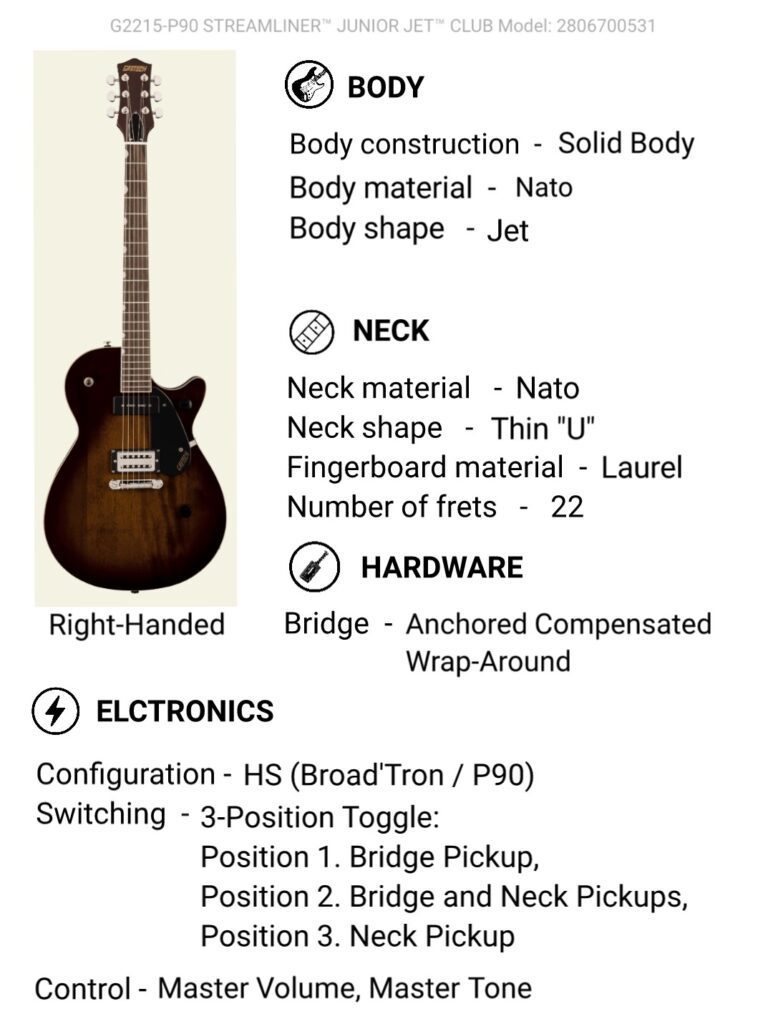
Read More
 Amazon.in
Amazon.in  ₹ 32,985
₹ 32,985  Go To Store
Go To Store
 Amazon.in
Amazon.in  ₹ 32,985
₹ 32,985  Go To Store
Go To Store
 Amazon.com
Amazon.com  $ 399
$ 399  Go To Store
Go To Store
 Amazon.com
Amazon.com  $ 399
$ 399  Go To Store
Go To Store
 Guitar Center
Guitar Center  $ 399
$ 399  Go To Store
Go To Store
 Thomann
Thomann  $ 325
$ 325  Go To Store
Go To Store
 Thomann
Thomann  $ 325
$ 325  Go To Store
Go To Store
Gretsch G2655T Streamliner Center Block Jr. Double-Cut With Bigsby
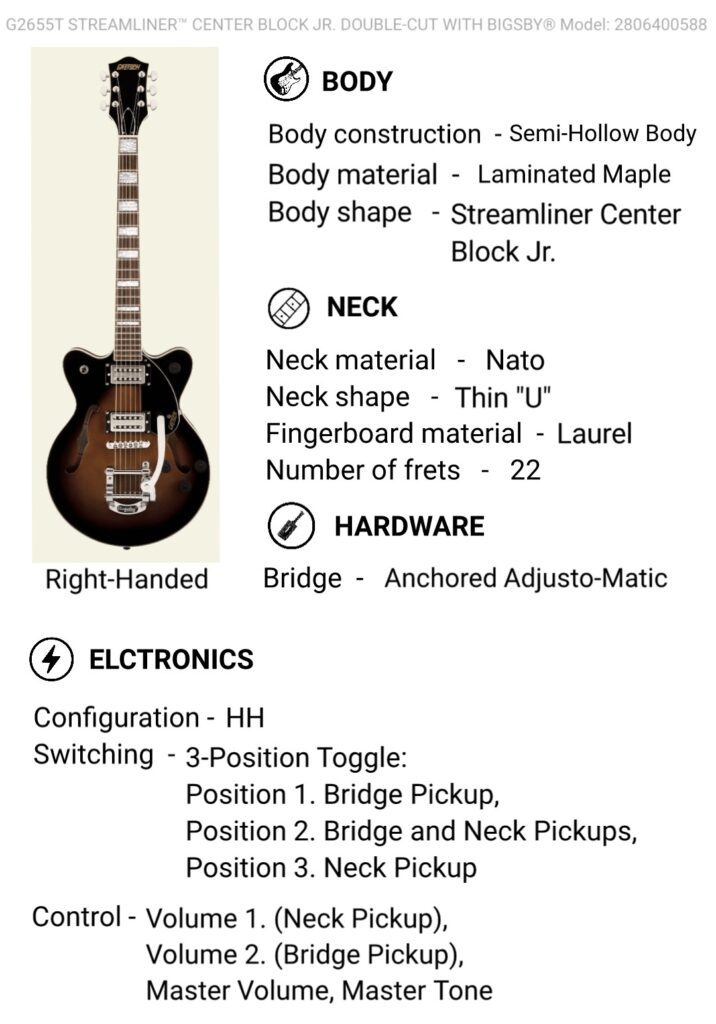
Read More
 Amazon.in
Amazon.in  ₹ 34,638
₹ 34,638  Go To Store
Go To Store
 Amazon.in
Amazon.in  ₹ 34,638
₹ 34,638  Go To Store
Go To Store
 Amazon.com
Amazon.com  $ 419
$ 419  Go To Store
Go To Store
 Amazon.com
Amazon.com  $ 419
$ 419  Go To Store
Go To Store
 Guitar Center
Guitar Center  $ 419
$ 419  Go To Store
Go To Store
 Thomann
Thomann  $ 498
$ 498  Go To Store
Go To Store
 Thomann
Thomann  $ 498
$ 498  Go To Store
Go To Store
Gretsch G5232T Electromatic Double Jet FT With Bigsby

Read More
 Amazon.in
Amazon.in  ₹ 57,786
₹ 57,786  Go To Store
Go To Store
 Amazon.in
Amazon.in  ₹ 57,786
₹ 57,786  Go To Store
Go To Store
 Amazon.com
Amazon.com  $ 699
$ 699  Go To Store
Go To Store
 Amazon.com
Amazon.com  $ 699
$ 699  Go To Store
Go To Store
 Guitar Center
Guitar Center  $ 699
$ 699  Go To Store
Go To Store
 Thomann
Thomann  $ 515
$ 515  Go To Store
Go To Store
 Thomann
Thomann  $ 515
$ 515  Go To Store
Go To Store
Gretsch G5622T Electromatic Center Block Double-Cut With Bigsby

Read More
 Amazon.in
Amazon.in  ₹ 66,052
₹ 66,052  Go To Store
Go To Store
 Amazon.in
Amazon.in  ₹ 66,052
₹ 66,052  Go To Store
Go To Store
 Amazon.com
Amazon.com  $ 799
$ 799  Go To Store
Go To Store
 Amazon.com
Amazon.com  $ 799
$ 799  Go To Store
Go To Store
 Guitar Center
Guitar Center  $ 799
$ 799  Go To Store
Go To Store
 Thomann
Thomann  $ 744
$ 744  Go To Store
Go To Store
 Thomann
Thomann  $ 744
$ 744  Go To Store
Go To Store
Gretsch G5700 Electromatic Lap Steel
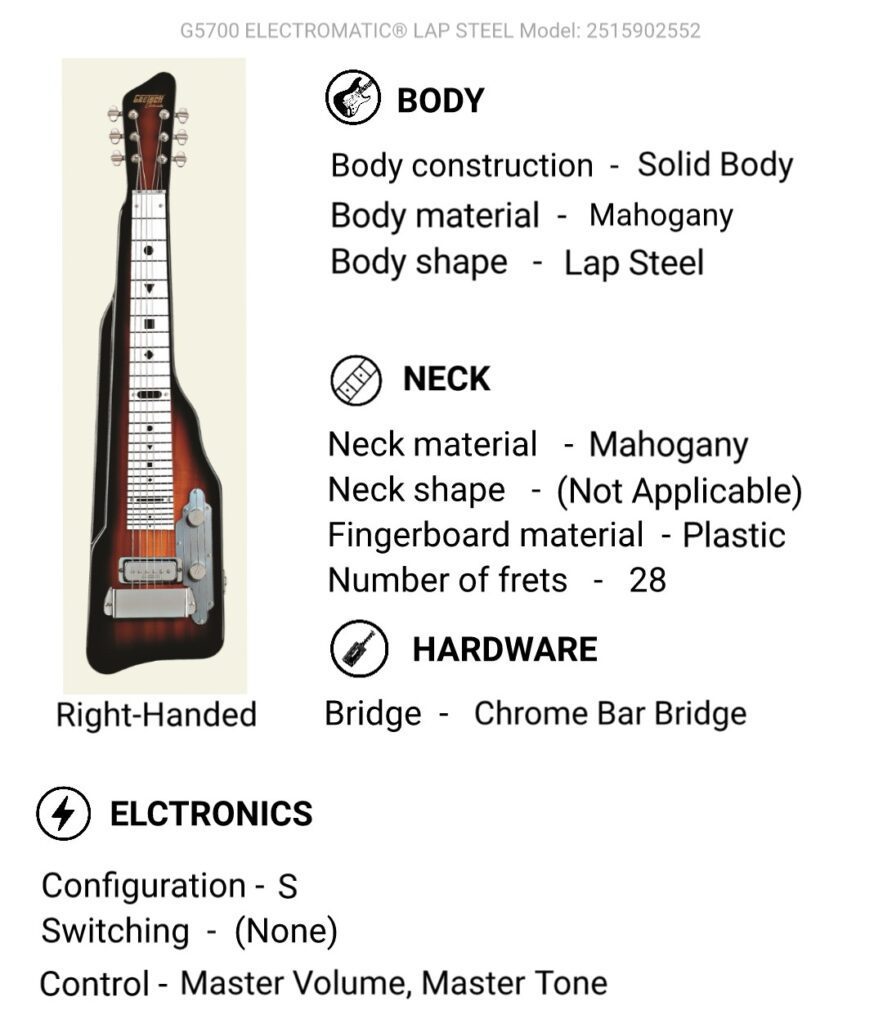
Read More
 Amazon.in
Amazon.in  ₹ 41,252
₹ 41,252  Go To Store
Go To Store
 Amazon.in
Amazon.in  ₹ 41,252
₹ 41,252  Go To Store
Go To Store
 Amazon.com
Amazon.com  $ 499
$ 499  Go To Store
Go To Store
 Amazon.com
Amazon.com  $ 499
$ 499  Go To Store
Go To Store
 Guitar Center
Guitar Center  $ 499
$ 499  Go To Store
Go To Store
 Thomann
Thomann  $ 425
$ 425  Go To Store
Go To Store
 Thomann
Thomann  $ 425
$ 425  Go To Store
Go To Store
Gretsch G5220 Electromatic Jet BT Single-Cut With V-Stoptail
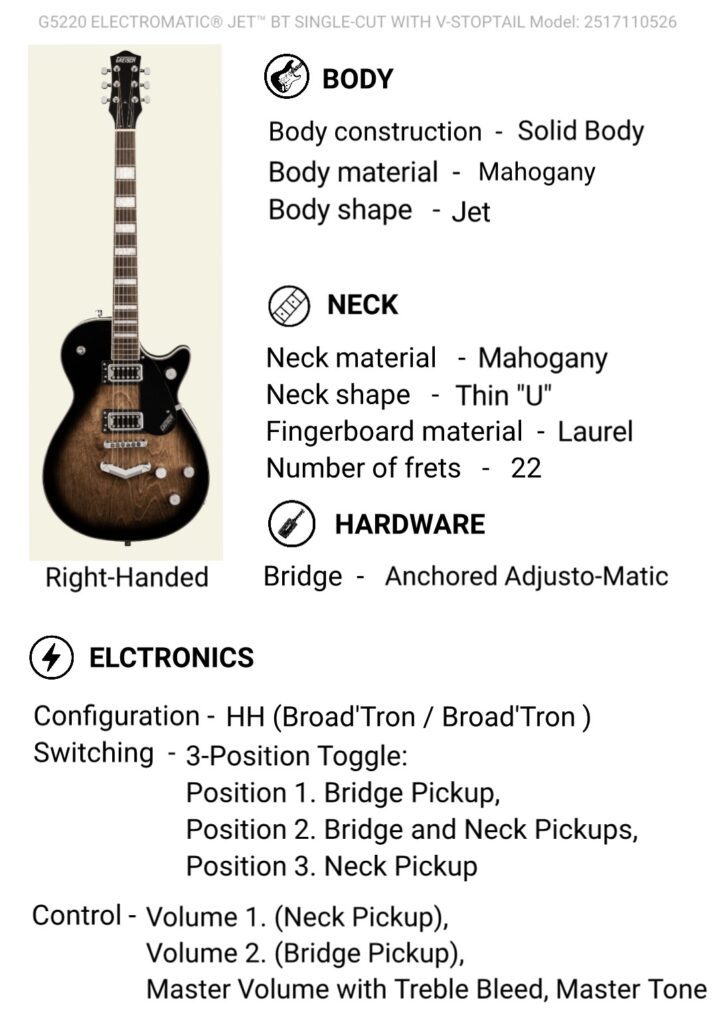
Read More
 Amazon.in
Amazon.in  ₹ 1,01,728
₹ 1,01,728  Go To Store
Go To Store
 Amazon.in
Amazon.in  ₹ 1,01,728
₹ 1,01,728  Go To Store
Go To Store
 Amazon.com
Amazon.com  $ 1,230
$ 1,230  Go To Store
Go To Store
 Amazon.com
Amazon.com  $ 1,230
$ 1,230  Go To Store
Go To Store
 Guitar Center
Guitar Center  $ 599
$ 599  Go To Store
Go To Store
 Thomann
Thomann  $ 449
$ 449  Go To Store
Go To Store
 Thomann
Thomann  $ 449
$ 449  Go To Store
Go To Store
Gretsch G2622T Streamliner Center Block Double-Cut With Bigsby
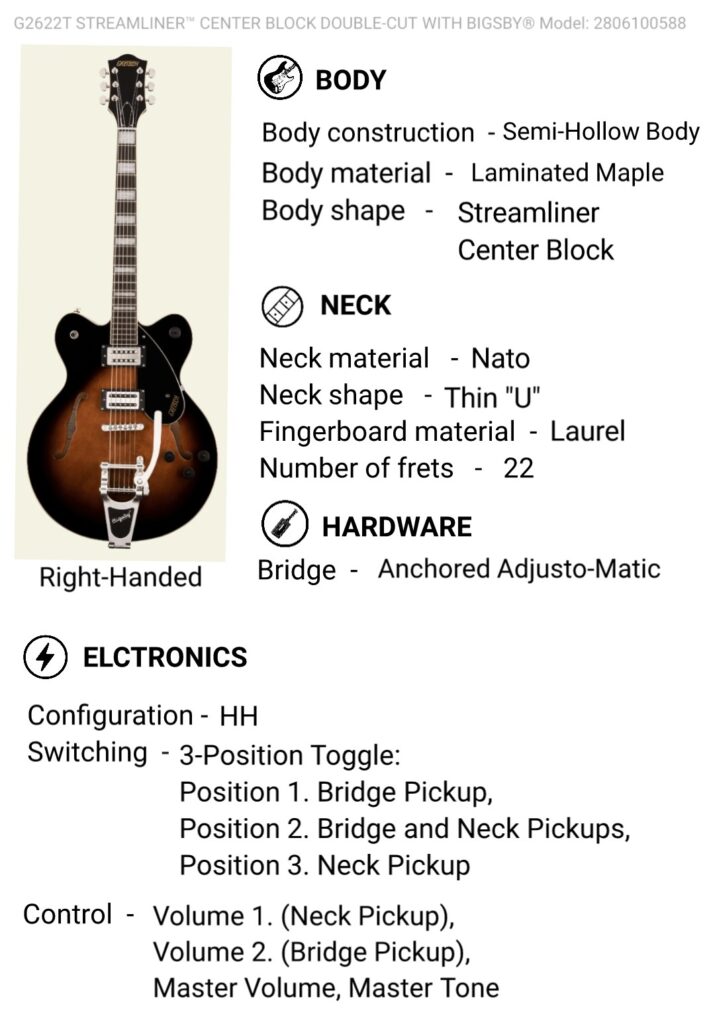
Read More
 Amazon.in
Amazon.in  ₹ 94,308
₹ 94,308  Go To Store
Go To Store
 Amazon.in
Amazon.in  ₹ 94,308
₹ 94,308  Go To Store
Go To Store
 Amazon.com
Amazon.com  $ 1140
$ 1140  Go To Store
Go To Store
 Amazon.com
Amazon.com  $ 1140
$ 1140  Go To Store
Go To Store
 Guitar Center
Guitar Center  $ 599
$ 599  Go To Store
Go To Store
 Thomann
Thomann  $ 499
$ 499  Go To Store
Go To Store
 Thomann
Thomann  $ 499
$ 499  Go To Store
Go To Store
Gretsch G5222 Electromatic Double Jet BT With V-Stoptail

Introduction: Gretsch, a name synonymous with vintage elegance and distinctive tones, has left an indelible mark on the world of electric guitars. With a rich history dating back to the 1880s, Gretsch guitars have become iconic instruments embraced by players across genres. In this article, we’ll embark on a journey through the Gretsch electric guitar lineup, exploring the unique characteristics and series that define this legendary brand.
”Read_More”
1. Gretsch Electromatic Series: Affordable Excellence
- The Electromatic series is Gretsch’s entry-level line, offering affordable options without compromising on quality.
- Explore models like the G2622 Streamliner and G5425 Jet Club, known for their sleek designs, powerful pickups, and affordability.
- Learn how the Electromatic series provides a gateway to the Gretsch experience for players of all levels.
2. Gretsch Streamliner Series: Vintage Vibes with Modern Playability
- The Streamliner series combines vintage aesthetics with modern playability, catering to players who appreciate the best of both worlds.
- Models like the G2622 Streamliner and G2655T Streamliner feature Broad’Tron pickups, lightweight bodies, and stylish finishes.
- Dive into how the Streamliner series captures the essence of Gretsch’s history while offering contemporary features.
3. Gretsch Center Block Series: Feedback Resistance with Classic Charm
- The Center Block series incorporates a chambered center block to minimize feedback while retaining the signature Gretsch tone.
- Explore models like the G2622T Streamliner Center Block and G5622T Electromatic Center Block, known for their versatility and stability at higher volumes.
- Understand how the Center Block series caters to players who seek a vintage-inspired look with modern functionality.
4. Gretsch Professional Collection: Artisan Craftsmanship and Sonic Mastery
- The Professional Collection represents the pinnacle of Gretsch craftsmanship, featuring top-tier materials and meticulous attention to detail.
- Explore models like the G6136T Players Edition Falcon and G6120T Players Edition Nashville, known for their exquisite finishes and premium appointments.
- Delve into how the Professional Collection offers instruments designed for discerning players and collectors.
5. Gretsch Players Edition: Modern Features for the Contemporary Player
- The Players Edition guitars are designed to meet the demands of contemporary players, featuring enhanced playability and versatile tones.
- Models like the G2622T Streamliner Center Block and G6609 Players Edition Broadkaster offer modern features such as locking tuners and treble bleed circuitry.
- Discover how the Players Edition series caters to players who value performance-oriented features in their instruments.
6. Gretsch Vintage Select Edition: Time-Tested Classics Reimagined
- The Vintage Select Edition pays homage to Gretsch’s historical models, reimagining classic designs with modern craftsmanship.
- Explore models like the G6118T Anniversary and G6120T-59 Vintage Select ’59 Chet Atkins, capturing the spirit of iconic Gretsch guitars from the past.
- Understand how the Vintage Select Edition appeals to players who crave the authenticity of vintage designs.
7. Gretsch Brian Setzer Signature Models: Rockabilly Royalty
- The Brian Setzer Signature models pay tribute to the legendary guitarist, offering instruments tailored to his specifications.
- Explore models like the G6120T-BSNSH Brian Setzer Nashville and G6120T-59BSMR Brian Setzer ’59, known for their hot-rod aesthetics and rockabilly-inspired tones.
- Delve into how these signature models showcase Gretsch’s collaboration with iconic artists.
8. Gretsch Jim Dandy: Retro Vibe, Affordable Charm
- The Jim Dandy series is Gretsch’s foray into the realm of parlor guitars, offering a retro vibe at an affordable price.
- Explore models like the G9500 Jim Dandy Flat Top, known for its compact size, vintage appointments, and unique character.
- Understand how the Jim Dandy series provides an entry point for players seeking Gretsch’s distinctive charm in a compact package.
9. Limited Edition Models:
Limited Edition models are guitars produced in a restricted quantity for a specified period. These guitars often feature unique finishes, special appointments, or exclusive design elements. Limited Edition releases are intended to be collectible and may celebrate milestones, anniversaries, or collaborations with artists. Due to their limited availability, these guitars can become sought-after items among collectors and enthusiasts.
10. Custom Shop Models:
The Custom Shop models from Gretsch represent the pinnacle of craftsmanship and attention to detail. These guitars are handcrafted by skilled artisans in Gretsch’s Custom Shop, often using high-quality materials and meticulous construction techniques. Custom Shop guitars may feature unique finishes, premium appointments, and special specifications that set them apart from standard production models.
Conclusion: Gretsch electric guitars stand as a testament to the brand’s commitment to timeless design, craftsmanship, and sonic excellence. Whether you’re drawn to the affordable elegance of the Electromatic series, the vintage-inspired tones of the Streamliner series, the modern features of the Players Edition, or the artisan craftsmanship of the Professional Collection, Gretsch offers a guitar for every player’s taste and style. As Gretsch continues to evolve, the legacy of these guitars remains firmly rooted in their ability to inspire musicians across genres, making each instrument a work of art that transcends time and resonates with the soulful tones of musical history.
how to choose right Gretsch electric guitar
Choosing the right Gretsch electric guitar involves considering various factors, including your playing style, budget, and personal preferences. Gretsch offers a diverse range of models, each with its own unique features and tonal characteristics. Here’s a guide to help you make an informed decision:
1. Determine Your Playing Style:
- Rockabilly/Blues: If you’re into rockabilly or blues, consider models like the G6120T Players Edition or G2622 Streamliner.
- Rock/Rock and Roll: For a versatile rock sound, Gretsch offers signature models like the G6120 Brian Setzer and vintage-inspired models like the G6120T Vintage Select.
2. Consider Your Budget:
- Entry-Level: The Streamliner and Electromatic series offer more affordable options without compromising on quality.
- Mid-Range: Players Edition and Center Block series provide a balance of affordability and enhanced features.
- High-End: Professional Collection and Vintage Select Edition represent the top tier with premium craftsmanship and materials.
3. Body Style and Design:
- Single Cutaway: Models like the G6120 Vintage Select or G6121T-62 Vintage Select have a classic single-cutaway design.
- Double Cutaway: The G2622 Streamliner and G2622T Streamliner Center Block feature double-cutaway designs for easier access to higher frets.
4. Pickup Configuration:
- Filter’Tron Pickups: Classic Gretsch sound is often associated with Filter’Tron pickups. Consider models with these pickups for that iconic tone.
- Broad’Tron Pickups: Streamliner series often features Broad’Tron pickups for a powerful, modern sound.
5. Neck Profile and Fingerboard:
- Neck Shape: Gretsch guitars often have U-shaped necks, providing a comfortable grip. Test different neck shapes to find your preference.
- Fingerboard Material: Gretsch guitars typically have rosewood or ebony fingerboards. Each material has a distinct feel and tone.
6. Bridge Type:
- Bigsby Tremolo: Many Gretsch guitars feature a Bigsby tremolo system for subtle pitch modulation. Consider if you prefer this feature.
- Fixed Bridge: Some models, especially in the Electromatic series, have fixed bridges for stability.
7. Aesthetic Preferences:
- Color and Finish: Gretsch guitars are known for their stunning finishes. Choose a color and finish that resonates with your taste.
- Hardware: Pay attention to hardware details like gold or chrome finishes, which contribute to the overall aesthetic.
8. Explore Signature Models:
- Brian Setzer Signature: If you’re a fan of rockabilly, explore the Brian Setzer signature models for that signature Gretsch rockabilly sound.
- Other Artist Signatures: Gretsch collaborates with various artists, offering signature models like the G6128T-GH George Harrison Signature Duo Jet.
9. Test Before You Buy:
- If possible, try out the guitar in person. The feel, playability, and resonance are crucial factors.
10. Read Reviews and Gather Opinions:
- Research online reviews and seek opinions from other players to understand the strengths and weaknesses of specific models.
11. Warranty and After-Sales Service:
- Check the warranty offered by Gretsch and ensure good after-sales support.
12. Consider the Series:
- Streamliner: Affordable and versatile.
- Electromatic: A step up with quality materials and craftsmanship.
- Center Block: Feedback-resistant with modern features.
- Players Edition: Modern features for contemporary players.
- Vintage Select Edition: Vintage-inspired models paying homage to classic designs.
- Professional Collection: Premium craftsmanship and materials.
Remember that the “right” Gretsch guitar is subjective and depends on your personal preferences. Whether you’re drawn to the vintage aesthetics of the Streamliner or the premium craftsmanship of the Professional Collection, Gretsch offers a guitar that captures the essence of its rich history and inspires musicians across genres. Take your time to explore the options, test different models, and find the Gretsch guitar that resonates with your playing style and musical vision.
Pros and Cons of Gretsch electric guitars
Gretsch electric guitars are known for their distinctive designs, vintage aesthetics, and unique tones. Like any brand, Gretsch guitars have their own set of pros and cons. Here’s an overview:
Pros of Gretsch Electric Guitars:
- Distinctive Aesthetics: Gretsch guitars are renowned for their vintage-inspired designs, including iconic body shapes, ornate inlays, and stylish finishes. The visual appeal of Gretsch guitars often stands out on stage.
- Unique Tones: Gretsch guitars, particularly those with Filter’Tron pickups, produce distinctive and clear tones. They are often associated with genres like rockabilly, rock ‘n’ roll, and country due to their unique sonic characteristics.
- Versatility: While Gretsch is often associated with certain genres, many of their guitars, especially those with Broad’Tron pickups, offer versatility and can handle a range of musical styles, including rock, alternative, and more.
- Hollow and Semi-Hollow Options: Gretsch offers a variety of hollow and semi-hollow body guitars, providing players with options for enhanced resonance and a unique playing experience.
- Build Quality: Gretsch is known for producing guitars with solid build quality. Higher-end models, such as those in the Professional Collection, showcase craftsmanship and attention to detail.
- Bigsby Tremolo Systems: Many Gretsch guitars come equipped with Bigsby tremolo systems, allowing for subtle pitch modulation and adding a vintage touch to the playing experience.
- Artists’ Signature Models: Gretsch collaborates with renowned artists to create signature models, providing players with the opportunity to play instruments designed to meet the specific preferences of their favorite guitarists.
Cons of Gretsch Electric Guitars:
- Price Range: Higher-end Gretsch models can be relatively expensive, which may be a limiting factor for some players on a budget. However, there are more affordable options in the Electromatic and Streamliner series.
- Weight: Some players may find certain Gretsch hollow-body guitars to be heavier compared to solid-body guitars. This may affect comfort during extended playing sessions.
- Feedback Issues: Hollow-body guitars are more prone to feedback, especially at higher volumes and with certain playing styles. This may be a consideration for players who require minimal feedback in their setups.
- Specific Tonal Character: The unique tones of Gretsch guitars, while loved by many, may not suit every player’s preference or the requirements of certain musical genres.
- Not Ideal for Heavy Distortion: While Gretsch guitars are versatile, players seeking a heavily distorted or metal-oriented sound might find that Gretsch pickups, especially Filter’Tron models, are not inherently designed for extreme gain.
- Learning Curve with Bigsby Tremolo: Some players may find the Bigsby tremolo system challenging to use, especially if they are accustomed to more traditional tremolo designs.
It’s essential to consider your playing style, preferences, and the specific characteristics you’re seeking in a guitar when evaluating Gretsch models.
What kinds of music are Gretsch guitars are Good for ?
Gretsch guitars are known for their distinctive tones and are particularly well-suited for certain genres of music. The unique characteristics of Gretsch guitars, including their hollow and semi-hollow body designs, Filter’Tron pickups, and Bigsby tremolo systems, contribute to their signature sound. Here are some genres of music for which Gretsch guitars are often considered a good fit:
- Rockabilly: Gretsch guitars, especially those with single-cutaway designs and Filter’Tron pickups, are widely associated with the rockabilly genre. Artists like Eddie Cochran and Brian Setzer have popularized the use of Gretsch guitars in this style.
- Rock ‘n’ Roll: The twangy and articulate tones of Gretsch guitars make them well-suited for classic rock ‘n’ roll. The dynamic range and unique resonance of Gretsch guitars can cut through the mix in energetic rock settings.
- Country: Gretsch guitars are a favorite among many country guitarists. The clean and bright tones produced by Filter’Tron pickups, combined with the twangy characteristics of the hollow or semi-hollow bodies, complement the sound of country music.
- Jazz: The warm and mellow tones of Gretsch hollow-body guitars make them suitable for jazz. Their resonance and sustain, combined with the ability to produce clean tones, contribute to the smooth sound required in jazz playing.
- Surf Rock: The tremolo systems and bright tones of Gretsch guitars have found a place in surf rock. The distinctive sound of models like the Gretsch White Falcon has made them popular in this genre.
- Indie and Alternative Rock: Some Gretsch models, especially those with modern features like the Players Edition series, are embraced by indie and alternative rock musicians. The versatility and unique aesthetic of Gretsch guitars can bring a fresh character to these genres.
- Roots and Americana: The vintage-inspired tones of Gretsch guitars make them suitable for roots and Americana music. The warmth and character of Gretsch guitars can enhance the organic and acoustic qualities of these genres.
- Blues: While not as commonly associated with blues as some other guitar brands, Gretsch guitars, especially those with Filter’Tron pickups, can deliver expressive and articulate blues tones, particularly in genres like rock blues.
It’s important to note that the suitability of a guitar for a specific genre is subjective, and many guitarists use Gretsch guitars across a wide range of musical styles. The choice of a Gretsch guitar ultimately depends on the player’s preferences, playing style, and the specific sonic characteristics they are seeking.
What is the difference between Filter’Tron and Broad’Tron pickups ?
Filter’Tron and Broad’Tron are two distinct types of pickups produced by Gretsch, each with its own sonic characteristics. Let’s explore the differences between Filter’Tron and Broad’Tron pickups:
Filter’Tron Pickups:
- Vintage Vibe: Filter’Tron pickups are known for their vintage-inspired sound. They were originally introduced by Gretsch in the 1950s and have become a signature element of the Gretsch guitar sound.
- Characteristics: Filter’Tron pickups are known for their clear and bright tones with a pronounced midrange. They have a unique, slightly compressed sound that adds a touch of warmth and twang to the overall tone.
- Sonic Palette: Filter’Tron pickups are often associated with genres such as rockabilly, rock ‘n’ roll, country, and jazz. Their ability to deliver articulate and defined tones makes them suitable for a variety of playing styles.
- Articulation: The articulate and defined nature of Filter’Tron pickups makes them well-suited for picking techniques and genres where clarity and note definition are essential.
Broad’Tron Pickups:
- Modern Design: Broad’Tron pickups are a more recent addition to Gretsch’s pickup lineup. They are designed to offer a more modern and powerful sound compared to the vintage-inspired Filter’Tron pickups.
- Characteristics: Broad’Tron pickups are known for their high output and a broader frequency response. They deliver a more robust and aggressive sound with a tighter low end, making them suitable for genres that require a heavier and more modern tone.
- Sonic Palette: Broad’Tron pickups are often associated with contemporary genres such as rock, alternative rock, and heavier styles of music. They excel in situations where a more powerful and modern pickup response is desired.
- Versatility: Broad’Tron pickups are designed to handle gain and distortion effectively, making them suitable for players who want to explore a broader sonic range, from clean tones to high-gain situations.
Which to Choose:
- Filter’Tron for Vintage Vibes: If you’re looking for a classic, vintage-inspired sound with a touch of warmth and twang, Filter’Tron pickups may be the preferred choice.
- Broad’Tron for Modern Tones: If you’re playing modern rock, alternative, or heavier genres and prefer a pickup with higher output and a more modern response, Broad’Tron pickups might be more suitable.
Ultimately, the choice between Filter’Tron and Broad’Tron pickups comes down to your playing style, musical preferences, and the sonic characteristics you are seeking in your guitar. Many Gretsch models offer both Filter’Tron and Broad’Tron options, allowing players to choose the pickup that best suits their needs.
History of Gretsch electric guitars
The history of Gretsch electric guitars is rich and spans over a century, marked by innovation, iconic designs, and collaborations with legendary musicians. Here is an overview of key milestones in the history of Gretsch electric guitars:
1883-1930s: Founding and Early Years
- 1883: Gretsch is founded by Friedrich Gretsch in Brooklyn, New York. The company initially focuses on the production of banjos, drums, and tambourines.
- 1920s: Gretsch becomes a prominent manufacturer of musical instruments, gaining recognition for its high-quality drums and banjos.
1930s-1940s: Entry into Electric Guitars
- 1930s: Gretsch starts producing archtop guitars, but it is not until the late 1930s that the company ventures into the production of electric guitars.
- 1939: The Electromatic line is introduced, marking Gretsch’s entry into the electric guitar market. These early electric guitars featured DeArmond pickups.
1950s: Rise to Prominence
- 1950s: Gretsch electric guitars gain popularity, especially with the introduction of models like the Duo Jet and the Round Up.
- 1954: Chet Atkins, a prominent country guitarist, collaborates with Gretsch to create the Gretsch Chet Atkins 6120, one of the most iconic models in the company’s history.
- 1955: Gretsch introduces the White Falcon, a luxurious hollow-body guitar that becomes a symbol of sophistication and elegance.
1960s: Expanding the Lineup
- 1960s: Gretsch continues to expand its lineup with models like the Country Gentleman and the Tennessean. The company experiences success with endorsements from musicians like George Harrison of The Beatles, who plays a Gretsch Country Gentleman.
1970s-1980s: Ownership Changes
- Late 1970s: Gretsch faces financial difficulties and changes ownership multiple times. Production moves to various locations, including Arkansas and later Japan.
- 1985: Fred W. Gretsch, a descendant of the original founder, reacquires the company. Production is moved to Japan, where Gretsch guitars are manufactured with high-quality craftsmanship.
2000s-Present: Resurgence and Innovation
- Early 2000s: Gretsch experiences a resurgence in popularity. The company introduces various reissue models, staying true to its vintage designs.
- 2002: Fender Musical Instruments Corporation acquires the Gretsch brand, leading to increased visibility and distribution.
- 2010s-Present: Gretsch continues to innovate with new models, including the Players Edition and Streamliner series. The company maintains its reputation for crafting guitars with unique aesthetics and vintage-inspired tones.
Throughout its history, Gretsch electric guitars have been associated with a diverse range of genres, from rockabilly and rock ‘n’ roll to country and jazz. The brand’s commitment to quality craftsmanship and its ability to adapt to changing musical landscapes have contributed to its enduring legacy in the world of electric guitars. Today, Gretsch guitars remain popular among musicians who appreciate their distinctive designs and iconic sounds.
”Read_Less”
